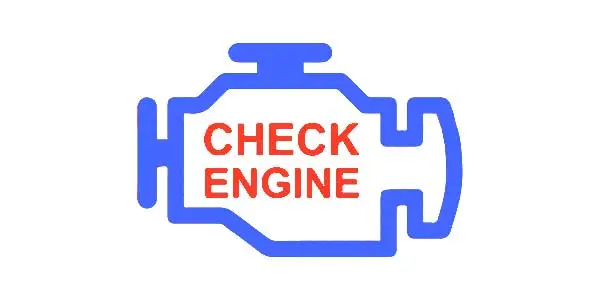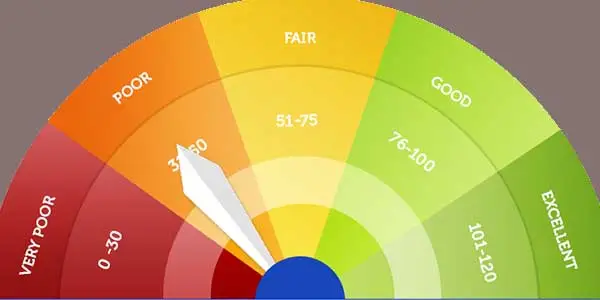Most current vehicles are technologically advanced, with the electronic or engine control unit (ECU) flawlessly timing fuel injection to ensure appropriate performance. The ECU relies on the throttle position sensor (TPS) to give precise engine air intake data in order to do this.
However, the throttle position sensor might become loose or disconnected at any time. This causes many automotive concerns, such as a lack of power, resulting in a very unpleasant – and perhaps dangerous – driving experience. After all, you don’t want to be the source of all the hooting when your vehicle comes to a halt on a crowded roadway.
In a nutshell, the computer module will have difficulty deciding how much air-fuel combination to pump into the engine at any given time. This will influence how the automobile responds when you push the accelerator pedal firmly or lightly with your foot.
Here’s What Happens If You Disconnect the Throttle Position Sensor?
As previously stated, the throttle position sensor determines how quickly or slowly the vehicle may drive. I’ll describe how it works to guarantee the automobile can go at the required velocity at any given time. But first, let me explain something else that is still relevant to this notion.
When you want the automobile to drive quickly, you press down firmly on the accelerator pedal, and when you want it to travel slowly, you softly press down on the pedal.
Both of these operations will now affect how much the throttle valve, which allows the air-fuel combination into the engine, opens.
This means that these activities will have an impact on how much air-gas mixture is used in the combustion.
That means that these actions will also influence how much air-gas mixture goes into the combustion chambers at any one time.
When you push the pedal forcefully with your foot, the throttle valve opens wide, allowing more air-gas combination into the engine.
As a result, the combustion rate will rise, resulting in higher velocity. When you gently push the pedal, the valve opens less broadly.
This means that less air-gas combination will enter the engine, resulting in a lower combustion rate and velocity.
The throttle position sensor is always vigilant during any pedal motion, watching how wide the throttle valve opens. It then communicates this information to the computer, which instructs it to inject the right quantity of air-fuel combination into the engine based on the data.
If the throttle valve is opened wide, the throttle position sensor tells the computer to feed more air-fuel mixture into the engine, allowing the automobile to accelerate quickly due to a greater combustion rate.
If it opens less widely, the TPS will instruct the computer to supply less fuel to the engine, resulting in a lower combustion rate. The car’s velocity will be reduced as a result.
How to tell if your throttle position sensor is failing?
The throttle position sensor is critical to the proper operation of your vehicle. As a result, it’s recommended to keep the TPS in the proper position at all times.
Here are some things to keep an eye out for:
Check Engine light illuminated:

The Check Engine light illuminates various throttle position sensor failure scenarios. While this might indicate a variety of problems with your vehicle, it is essential to investigate and establish the source.
After all, it might be nothing, or you could be preventing a developing problem.
Uneven idling and/or stalling:
When idle, your vehicle should make a fairly even sound. However, the engine may sound slower than usual at times, or it may have an irregular idle consisting of shudders and jerks. This might indicate a faulty throttle position sensor.
Indeed, the same inaccuracy in sensor location might cause the engine to stall completely, which is a very unpleasant circumstance for any driver.
Difficulties with acceleration:

An intermittent supply of air and fuel to the engine is caused by a defective throttle position sensor. In other words, the engine may be receiving more or less gasoline than it requires.
As a result, you may find that when you foot on the throttle, your automobile does not accelerate as smoothly as you would want. When you let up on the throttle, the car may offer you more power than you bargained for.
Similarly, your vehicle may initially accelerate properly but find it difficult to exceed a particular speed. This issue also affects your gear changes, stopping you from shifting higher. This is especially noticeable in vehicles with automatic transmissions.
Grime buildup on the TPS:

The jerks and shaking caused by the uneven idling and acceleration issues might be an indication that it’s time to get close and personal with your car’s throttle position sensor. If you don’t mind getting dirt under your nails, you may inspect beneath the hood more attentively.
The TPS may occasionally fail due to filth accumulating in and around the throttle body. The dirt considerably disrupts airflow through the sensor and into the engine. This sends inaccurate intake data to the ECU, causing the computer to issue improper fuel injection commands.
Deteriorating fuel economy:

Gasoline efficiency suffers as a result of a disconnected throttle position sensor, as the ECU is unable to adjust the quantity of fuel sent to the engine. As a result, your fuel consumption may be higher than quoted since the engine consumes more fuel than necessary.
Because of the risks connected with driving without a TPS, it is worthwhile to repair or replace your sensor. As a result, your car’s computer receives more precise data, ensuring that your engine operates at peak efficiency.
Can I drive if my throttle position sensor is faulty?
Yes and no—yes if the throttle position sensor is still partially functional and no if it is fully damaged. Remember that the TPS opens the throttle valve based on the amount of force the driver applies to the accelerator pedal with their foot.
That is, if the sensor is still operating to some level, the valve will be able to open to some extent, allowing the automobile to drive.
However, if the sensor fails, it will be unable to activate the valve regardless of how strongly or softly you step on the accelerator pedal.
That implies there will be no air-fuel combination entering the combustion chamber at that time, and the car will be unable to drive.
It’s also worth noting that certain newer car models don’t totally rely on the throttle position sensor to start.
A notable example is the Honda Civic CX, which has a Z6 engine. It’s incredible to see how this vehicle has backup systems that will take over when the TPS is removed to get the car operating.
Is It Dangerous to Drive Without TPS?
Naturally, it is. Otherwise, your automobile would not have arrived with the sensor, to begin with. Remember that each component of the engine has a unique purpose in ensuring the automobile moves safely and effectively.
Can a TPS be managed to evade?
Yes, especially if it’s making it difficult to start the engine. The quick answer is yes. Bypassing may be accomplished by disconnecting the TPS, then turning off the ignition, waiting 30 seconds, and then restarting the engine. The engine should start right up.
Is it worth replacing the TPS?
You may be wondering if replacing your Throttle Position Sensor is worthwhile. This will be determined by a number of things. First and foremost, is your automobile recent and has low mileage? If this is the case, it is absolutely worthwhile to replace the TPS.
If you have an old automobile with a lot of miles on it or if it has a lot of damage, you may want to sell it as is. Putting money into an automobile may not be a good idea.
How Much Does a Throttle Position Sensor Repair or Replacement Cost?
The cost of repairing or replacing the TPS varies depending on the vehicle. A throttle position sensor replacement procedure will typically cost between $200 and $300, not including labor.
Is it necessary to restart the computer after changing the TPS?
The decision to reset the car’s computer is dependent on how you resolve the TPS issue. If you just cleaned and re-plugged the sensor, TPS and computer resets are not required.
However, if you inserted a new sensor, you will need to reset both the TPS and the computer. Otherwise, your automobile may regain the issues you just resolved. As a result, after replacing the TPS, restart the computer to restore the correct ECU performance.
Conclusion
While it is possible to drive with a throttle position sensor disconnected, it is not recommended. A malfunctioning throttle sensor should be rectified as soon as feasible. While it may seem sensible to just disconnect the car if you can still drive it, be aware that you may cause yourself more problems in the long run.
You might want to see this:
- What Does Reduced Engine Power Mean?
- How Do You Know When Your Hybrid Battery Needs To Be Replaced
- Symptoms of Engine Damage from Overheating
- What Does A Car Do When The Oxygen Sensor Is Bad?
Frequently Asked Questions:
Is the throttle position sensor a factor in idle?
Because of the uneven airflow, the TPS might cause your vehicle to idle abnormally.
What if the TPS is not calibrated?
If your sensor is not properly calibrated, it will exhibit the following symptoms: Uneven idling, jerky acceleration, stalling, and the dreaded check engine light.
How does the throttle position sensor become reset?
By unplugging the negative terminal from your automobile battery, you may reset most of your car’s sensors. Wait for 5 to 10 minutes before reconnecting and starting the engine.
A second technique is to remove the engine control module fuse and wait a few minutes before reinstalling it.
